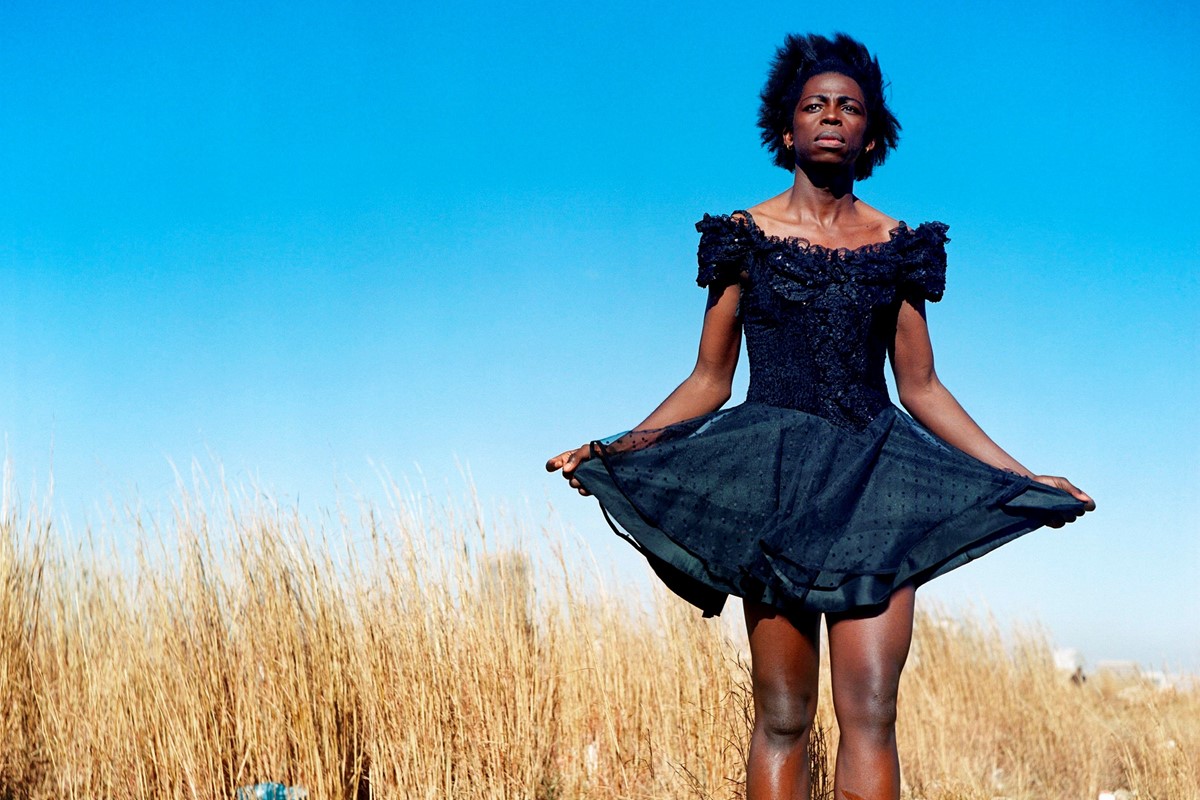A taste for life, Baragwanath Terminus, Diepkloof
1985 - Photography (Photography)
30 x 45 cm
Santu Mofokeng
Since the global capital expansion, billboards have been the medium of communication between the rulers and the residents of townships. In South Africa, a billboard is a relic from the times when Africans were subjects of power and when townships were restricted areas, subject to laws, municipality by-laws and ordinances regulated the movement of persons and governed who may or may not enter the township. Mofokeng references this medium for control through tracing the history of townships in South Africa. “A Taste For Life, Baragwanath Terminus, Diepkloof” captures the ruinous landscape surrounding the social, economic and political power of alcohol companies represented in the billboard. Referencing the history of billboards in South Africa — the economic boom of the sixties introduced American style highway advertising billboards that rendered Apartheid ideology anonymous and opaque, the politically turbulent period of the 1970s and 1980s that saw a resurgence of billboards and the recent liberalization of politics with the billboard used to address the HIV/AIDS pandemic — “A Taste For Life, Baragwanath Terminus, Diepkloof”, is a legible palimpsest for reading consumerism, the selling of an unachievable beauty, and cultural fear in Soweto. Mofokeng explores the way in which freedom of speech and cultural sensibility is assaulted by textual and visual bombardment in billboards.
The photographic artwork of Santu Mofokeng (b. Soweto, South Africa, 1956), also known as Mofokengâ, explores the complicated societal paradigm of South Africa. Exploring rural farm life, townships, religious rituals and the quotidian life of Black South Africans, Mofokeng’s artwork significantly contributes to a greater understanding of development and identity in the South African context. Mofokeng’s acute insight into the cultural meanings in landscape is testified in his mastership of the photographic medium. Using black and white film as a reference to the documentary genre and a gesture of resistance to the color-rich saturation of consumer culture, Mofokeng’s work presents new meanings on the trodden landscapes Soweto, favoring memory and identity over ownership and power. In highlighting the impoverishment of South African landscape in the face of capital expansion, Mofokeng’s photographs implore emancipation from the global oppression of greed.
Colors:
Related artist(s) to: Santu Mofokeng » Corinne Diserens, » Jo Ractliffe, » David Goldblatt, » Guy Tillim, » Mikhael Subotzky, » Okwui Enwezor, » Zanele Muholi, » Bergen Kunsthall, » Bureau Mueller, » Kunsthalle Bern

© » KADIST
David Goldblatt
1979David Goldblatt’s “Boksburg series” is a telling portrait of the small town that became a notorious symbol of racism in South Africa...

© » ANOTHER
Zanele Muholi
Zanele Muholi’s Potent Portrait of South Africa’s Queer Community | AnOther As their new exhibition opens in San Francisco, Zanele Muholi talks about their powerful photos of queer survivors of hate crimes, couples in everyday moments, and self-portraits referencing history February 02, 2024 Text Emily Steer Zanele Muholi creates potent portraits...

© » KADIST
Mikhael Subotzky
2006At the halfway point along South Africa’s Highway N1, running from Cape Town to Johannesburg, sits the small town of Beaufort West...

© » KADIST
Mikhael Subotzky
2004“Pasvang, Pollsmoor Maximum Security Prison” is the result of three months Subotzky spent inside the walls of Pollsmoor Prison, an overcrowded correctional facility largely controlled by gangs...

© » KADIST
Zanele Muholi
2014As a visual activist for the rights of Lesbian, gay, bisexual, transgender, queer and intersex (LBGTQI), Muholi’s photographs radically transgress the conventional perception of lesbian and transgender communities in South Africa...

© » KADIST
Zanele Muholi
2014As a visual activist for the rights of Lesbian, gay, bisexual, transgender, queer and intersex (LBGTQI), Muholi’s photographs radically transgress the conventional perception of lesbian and transgender communities in South Africa...

© » KADIST
Zanele Muholi
2014As a visual activist for the rights of Lesbian, gay, bisexual, transgender, queer and intersex (LBGTQI), Muholi’s photographs radically transgress the conventional perception of lesbian and transgender communities in South Africa...
